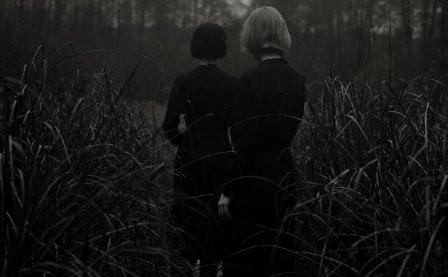There’s a palpable sense of intimacy prevalent throughout Malady of Elegance, the latest release from Goldmund (née Keith Kenniff, mastermind behind both this project and the excellent Helios, his more ambient-/electronic-oriented outlet). As with his other Goldmund releases, nearly all of the pieces on this record are contemplative, lethargic, slowly unraveling songs well-suited to a cold, snowy day (though, ironically, the record was released in the summer). Through emotionally manipulative, expressive playing and unique recording techniques, Kenniff succeeds in creating hushed atmospheres, but the album's concept feels contrived after a while and proves more damaging than helpful.
Malady of Elegance presents a fairly broad spectrum of emotion. The first four songs are warm, halcyon, and innocent, growing progressively darker in tone as the record plays on. Aptly-titled opener “Image-Autumn-Womb” is impressionistic and ephemeral, a mixture of dulcet tones that ring out lucidly and those that flutter around, beating dusty wings in the sepia light. The song combines finger-plucked and hammer-struck strings, easily one of the album's strongest tracks. Meanwhile, “Mound Builders,” among the eerier pieces, borrows a technique from Henry Cowell’s pioneering “The Banshee,” employing harshly-scraped strings to haunting effect. Closer “Evelyn” continues these varying emotional exploits, offering a surprisingly optimistic ending by allowing weak light to filter through the murk.
Amazingly, the microphones capture everything — the subtle scrape of flesh and fingernails on steel wire, a creaking piano bench, even the depression and release of sustain and damper pedals. This factor alone imbues the record with an amazing sense of humanity; quantized notes in a software sequencer couldn't replicate these elements. Indeed, Kenniff’s better work comes when he’s subtle and indirect. However, there are times when the effect is overbearing. On “Ouendake” and “Gifts,” the touch of ivory on a felt strip sounds much louder than the tones from the strings, making it far more detrimental than conducive to the goal attempted.
Some of these songs are genuinely haunting, but when almost every track evokes a similar feeling, the powers of those that are most forceful lose their potency. It’s a pretty album with great ideas, intriguing production value, and some stunningly gorgeous songs, but after half of the album has elapsed, it’s easy to get tired of its delicate, plodding nature. With more diversity, Malady Of Elegance could have been excellent, but as is, it’s simply pretty, unobtrusive ambience.
More about: Goldmund




